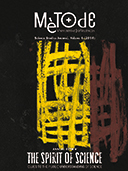Darwin and animal breeding: Evolution applied to breeding improvements
DOI:
https://doi.org/10.7203/metode.78.2470Keywords:
artificial selection, sexual selection, social character, animal welfare Abstract
Abstract
Darwin reflected on the potential of natural selection by comparing it with the results humans have achieved with artificial selection. This paper discusses how, although the similarity between the two is evident, there are also important differences. We also present two examples of applications of evolutionary theory: the potential importance of sexual selection in transgenic fish and selection for social characteristics in the context of welfare-friendly animal breeding.
 Downloads
Downloads
 References
References
López-Fanjul, C.; Castro, L. and M. A. Toro, 2009. «Darwinismo: aplicaciones y devociones». Revista de libros, 156: 32-39.
Toro, M. A., 2011. «Future Trends in Animal Breeding Due to New Genetic Technologies». Advances in Animal Biosciences, 1: 546-557. DOI: <10.1017/S2040470010005431>.
Toro, M. A. and L. Castro, 2009. «Evolución aplicada: la utilidad del darwinismo». In López-Fanjul, C. [ed.], 2009. El alcance del darwinismo. A los 150 años de «El origen de las especies». Colegio Libre de Eméritos. Madrid.
Wade, M. J.; Bijma, P.; Ellen, E. D. and W. Muir, 2010. «Group Selection and Social Evolution in Domestic Animals». Evolutionary Applications, 3: 453-465. DOI: <10.1111/j.1752-4571.2010.00147.x>.
Published
How to Cite
-
Abstract945
-
PDF235
-
PDF (Català)132
-
PDF (Español)4110
Issue
Section
License
![]()
All the documents in the OJS platform are open access and property of their respective authors.
Authors publishing in the journal agree to the following terms:
- Authors keep the rights and guarantee Metode Science Studies Journal the right to be the first publication of the document, licensed under a Creative Commons Attribution-NonCommercial-NoDerivatives 4.0 International License that allows others to share the work with an acknowledgement of authorship and publication in the journal.
- Authors are allowed and encouraged to spread their work through electronic means using personal or institutional websites (institutional open archives, personal websites or professional and academic networks profiles) once the text has been published.





